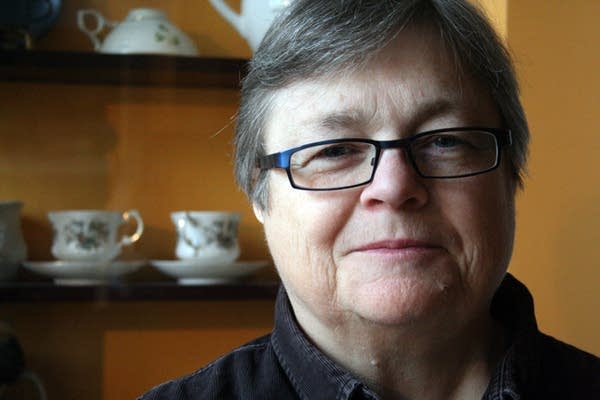Seeing shades of gray within domestic violence
Go Deeper.
Create an account or log in to save stories.
Like this?
Thanks for liking this story! We have added it to a list of your favorite stories.

Researchers and advocates whose mission is to eliminate domestic violence have challenged many of their old assumptions about aggression within the home.
One approach may sound a bit radical for advocates on the front lines of helping abuse victims: It's the idea that not every hit is the same. Ellen Pence began studying domestic violence at the birth of the movement, back in the 1970s. She says pioneers like herself intended to go after a certain breed of abuser -- the kind who hit his victim as a way to control and terrify her.
"There's this old term our grandmothers used: 'He's a wife beater,'" Pence explains. "(He's) someone you'd never want to introduce your daughter to, your cousin to, even if he'd gone through a program. That's who we meant all these laws for."
But Pence says the term "domestic violence" has become so broad that it can be applied to anyone who's ever shoved his or her spouse in a heated argument.
Turn Up Your Support
MPR News helps you turn down the noise and build shared understanding. Turn up your support for this public resource and keep trusted journalism accessible to all.
"Everything gets 'McDonaldized' and turned into something in the middle," she says. "People are living in absolute hell realms in houses because we've just said, 'Oh, it's domestic violence.' And because it's so common, we've failed to understand the depth of the impact of violence on children and women, and the misery they live in."
Pence, who heads the nonprofit research group Praxis International, says just as there are different types of violence, there should be different ways to treat and respond to the person who commits the violence.
She says traditional batterers should face extensive monitoring and longer jail sentences for violating their orders for protection. But someone who resorts to what's known as "situational violence" may benefit from anger-management programs.
Advocates say they don't want to excuse any form of abuse within the home. But they contend that police officers, therapists and divorce attorneys have long accepted the notion that that not every act of domestic violence amounts to "battering" -- the term coined for a pattern of ongoing intimidation, coercion and violence that one individual exerts over another.
Liz Richards of the Minnesota Coalition for Battered Women says a man who beats his wife to dominate her may not be the same as a man who once reacts poorly to a number of stressors in his life.
Richards says one problem with treating every hit as the same is that the victim who stands up to a long-time abuser with physical force is at the risk of facing the same kind of criminal penalties as the abuser.
Advocates say it's imperative to make these distinctions because the system is failing to red-flag the most dangerous cases involving domestic violence. They point to Pam Taschuk, the Lino Lakes woman who armed herself with just about every tool available to protect herself. A judge set her husband's bail at $5,000. Weeks later, Taschuk's husband shot her to death.
Yet advocates worry that their ability to see shades of gray within domestic violence will give chronic abusers a copout. And Richards says that's why it's so much easier for the courts to just stay focused on the incident.
"The slap, the hit. And it's much more difficult to ask these questions about control," she says. "And we're also nervous about asking these questions because I don't want anybody making soft assessments."
Prosecutors in the criminal justice system say they already do look at the broader context when deciding which level to charge a case, or in the sentences that they seek. But the statutes focus on what happened in a given moment, and not so much why it happened.
A new two-year pilot program funded by the Department of Justice is under way to develop a new set of guidelines for family courts. The Battered Women's Justice Project in Minneapolis will look at how child-custody evaluators, judges and attorneys can take a more nuanced look at domestic violence when resolving custody battles.
The family court system needs to make a distinction for victims who strike back against their long-time abusers, said Loretta Frederick, a legal and policy advisor to the Battered Women's Justice Project.
"That is a radically different kind of violence -- in its purpose, in its relationship, on its effect on its so-called victim, and what it says about the ability of that abuser to parent," Frederick says.
And custody evaluators need to recognize that a batterer who doesn't abuse his children may not be fit to parent, she said.
"People who are batterers have serious problems with parenting," she says. "They bring a series of values and beliefs of how they are entitled to control the family members that can quite damage children, (at a minimum, teach them very strange values."
But even if it's clear what's causing domestic violence, advocates and the courts need to make another distinction: How severe is it?
There's been a lot of talk about so-called risk assessments. But Pence says those checklists on their own can only go so far.
"When you come up to a victim, and you're a cop, and say, 'Has he ever threatened to commit suicide? Has he ever killed a pet? Has he ever done this, has he ever done that,' you're not having a dialogue with her," she says.
Pence says a better question would be, "Do you think he's going to try to kill you, and what makes you think so?"



